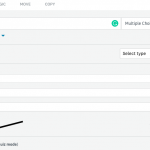How to use the Guttman scale in your survey
Use the Guttman scale to learn how strongly respondents feel about a topic or issue.

Sometimes the strength of opinions predicts outcomes better than the opinions themselves.
Take the case of adoption in America. While the vast majority of Americans support the practice of adoption, just 25% support it strongly enough to consider doing it themselves.
To understand the strength of opinions from your key stakeholders, use surveys that employ the Guttman scale.
The Guttman scale determines how strongly a survey respondent holds an opinion by using a series of “yes-no” questions or “agree-disagree” statements. This format helps determine not only what a respondent believes, but how strongly a respondent believes it. If you can gauge the strength of each respondent’s opinion, you can predict real-life outcomes with greater accuracy.
What is a Guttman scale?
In the mid-20th century, mathematician and social scientist Louis Guttman developed a method to predict which test questions his students got right based solely on their final scores. Guttman would list test questions from least to the most complex, then count down the list until he reached a particular student’s score. Everything above that point, the student got right. Everything below, the student got wrong. He applied this method to his work in social science.
The Guttman scale is based on a hierarchy of related questions. Respondents must answer “yes” or “no” to dichotomous questions that represent an increasingly extreme position on an issue. The more often a respondent answers “yes,” the more that respondent supports a particular opinion. By listing questions from least to most supportive, you can connect the number of times the respondent answers “yes” to a particular opinion.
The Guttman scale is a commonly used unidimensional scale, like the Likert scale and the Thurstone scale. The Guttman scale is also known as cumulative scaling or scalogram analysis. It is an ordinal scale with a number of statements placed in a hierarchical order. The order is arranged so that if a respondent agrees with a statement, they will also agree with all of the statements that fall below it in extremity. The first statement that indicates disagreement shows the respondent’s position on the subject.
To truly understand how the respondent feels about a topic, statements should be formulated and ordered to represent an increasingly extreme stance on an issue (least to most supportive of the topic). It’s best to engage a group to help create and place statements in order to reduce the risk of bias in both the statements and the order.
Let’s say a respondent is answering 10 Guttman scale questions and answers yes (indicating agreement) on five of them. On the sixth, they stop answering yes. It implies that they agree with the first five and disagree with the remaining five questions.
The value of using a Guttman scale is in the analysis. Use a matrix for scales with fewer statements and scalogram analysis for those with many items.
Why use a Guttman scale?
There are several reasons to use a Guttman scale for your survey:
- Properly formulated, a Guttman scale allows researchers to know which statements each respondent agrees with by knowing their final score.
- Guttman scale questions allow respondents to answer a large number of questions in a short amount of time due to the agree/disagree or yes/no answers.
- It is more intuitive than some other unidimensional scales because statements are ordered from least to most extreme, making it easier for respondents to choose answers.
- Data is shown in a ranked view. The Guttman scale ranks statement results by level of importance and each statement can be assigned a score by the level of importance.
- It’s a hierarchical scale. It can be assumed that if they stop taking the survey, they disagree with the remaining statements.
- You can ascertain the degree to which respondents feel about an issue based on their answers.
Examples of the Guttman scale
A Guttman scale survey is a series of related, dichotomous questions or statements. There are many examples of dichotomous questions in SurveyMonkey’s Question Bank. Generally, we advise against using dichotomous questions in surveys unless you’re doing it in a controlled way, like in a Guttman scale. Take this simple question on political views, for example:
Are you a registered voter?
- Yes
- No
The Guttman scale would combine the question above with related questions that represent an increasingly supportive (or, alternatively, critical) position of voting, such as:
Do you vote in every presidential election?
- Yes
- No
Should voting in all elections be mandatory?
- Yes
- No
Another example is using Guttman scale in an educational setting to assess the mathematical abilities of primary students.
The student is able to count to 100.
- Yes
- No
The student is able to perform addition.
- Yes
- No
The student is able to perform subtraction.
- Yes
- No
The student is able to solve multiplication problems.
- Yes
- No
The student is able to solve division problems.
- Yes
- No
Each statement indicates a higher level of skill in primary mathematics. A teacher can use this scale quarterly or annually to assess their student's math abilities. If they respond yes to a question, it indicates that they have responded yes to the previous questions.
Consider this Guttman scale example to assess views on mental health:
Depression affects many people in our society.
- Yes
- No
Depressed people should seek help from their doctors.
- Yes
- No
Medication can help with depression
- Yes
- No
Therapy and medication can help with depression
- Yes
- No
All depressed people can be helped with medication and therapy.
- Yes
- No
The answers to these questions reveal the respondents’ views and attitudes toward depression.
How do you use the Guttman scale?
You can apply the Guttman scale to a wide range of surveys. Here are some examples for when you’d use it:
- To evaluate cumulative learning. Guttman originally used his scale to evaluate students’ academic achievement.
- To measure opinion. The Guttman scale produces quantifiable measures of the strength of your respondents’ opinions.
- To gauge sentiment. This includes measuring customer satisfaction and employee engagement.
If customer satisfaction is an area of focus, check out our survey methodologist-approved questionnaire templates. And what about employee engagement? We’ve got plenty of templates covering that topic as well.
How do you build a Guttman scale?
Follow these 4 steps to create a survey that utilizes the Guttman scale:
1. Identify a research question that’s related to opinion or sentiment.
2. Generate a series of related “yes-no” questions or “agree-disagree statements” that support the same opinion to varying degrees. The more questions or statements, the more exact your data will be.
As you put your questions into your SurveyMonkey survey, use the “Score this question (enable quiz mode)” feature or add weight to your matrix/rating scale question.

Simply assign each “yes” or “agree” answer a score of 1 and each “no” or “disagree” answer a score of 0. The score of each online quiz represents the respondent’s strength of opinion, where a higher score indicates a more supportive opinion.
3. Order the questions from least to most supportive. While you can order the questions yourself, the risk of bias is lower if a study group takes on the task.
How do you interpret Guttman scale results?
You can compare the Guttman scale results across respondents and groups to measure their relative level of support.
Respondents who have higher final scores hold relatively more supportive opinions than others; while groups that have a higher average score hold more supportive opinions than other groups. Once your responses come back, you’ll be able to make these comparisons using SurveyMonkey Analyze.
How will you use Guttman scale questions?
Guttman scale questions are used to assess attitudes in political science, public opinion, market research, psychology, and anthropology. It’s a fast, concise way to hone in on the strength of your respondents’ attitudes and opinions on a limitless number of subjects. How will you incorporate a Guttman scale into your research?
Sign up with SurveyMonkey today to use the Guttman scale and our other comprehensive marketing solutions. Find the plan that fits your needs and get started now!
Ready to start measuring the strength of your respondents’ opinions? Begin by creating a new survey.
Discover more resources

Toolkits directory
Discover our toolkits, designed to help you leverage feedback in your role or industry.

Web form best practices that drive conversions (+templates)
Learn how to create better web forms that enhance the user experience and drive conversions with this article from SurveyMonkey.

Create a survey in three ways
Best practice guide to create surveys with AI, templates, or by scratch.

20 survey email templates to improve response rates
Need a winning customer survey email? Discover effective survey email templates to engage your audience, boost response rates, and gain valuable insights.